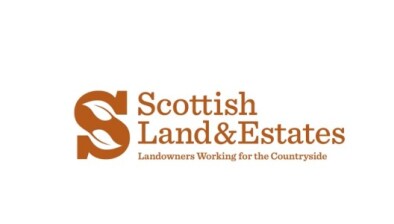David Stewart: Delivering NPF4 requires collaboration and land reform

David Stewart
Policy and practice lead David Stewart looks at the Scottish Land Commission’s work on land and housing, and land reuse proposals, that could support the necessary shift from greenfield to brownfield development.
NPF4 is highly significant. It sets a framework for land use and development in Scotland to 2045, signalling a bold change in direction and a clear focus on cutting carbon emissions and boosting biodiversity.
There are positive messages in NPF4, but challenges remain
There are significant implications for creating new homes and places, with development to move from greenfield land to reuse brownfield sites. Developments should also be higher density, supporting the creation of 20-minute neighbourhoods with amenities within walking distance.
The Scottish Land Commission also fully supports the policy focus on reducing carbon and encouraging active travel.
However, the challenge will be delivering these objectives on the ground – and the way land is supplied for development can play a significant role.
Currently, most homes are built on greenfield sites by private developers. Housebuilders take significant risks in bringing sites forward, and to manage that risk and provide shareholder returns, developers focus on lower-risk greenfield sites in high-value areas.
The Commission’s work on land and housing and land reuse points to several potential solutions that could support the shift from greenfield to brownfield development, including:
Public interest-led development
In this scenario, the public sector would play a fuller role in assembling land for development and shaping markets, reducing risk for the private sector.
In return for sharing risk, the public sector would deliver benefits such as better placemaking, with homes close to amenities and public transport. This is not a public sector takeover – private developers would continue to be the leading creators of new homes. Instead, it is about the public sector becoming more involved in a collaborative approach to delivering better places. There are examples of public interest-led development in Scotland, such as the Anderston Regeneration and the Commonwealth Games Village, which show that Scotland can deliver NPF4’s objectives – but these are exceptions, not the norm.
A study of housing development in NW Europe found that land reuse and better green space and public space are common in new developments in smaller towns and cities. A key reason for this was local authorities’ powers to buy land in advance of need and assemble sites for development.
With the Scottish Government committed to reforming Compulsory Purchase Orders and introducing Compulsory Sales Orders in the current Parliament, there is an opportunity to simplify land assembly, allowing public bodies to assemble brownfield land for redevelopment.
Wellbeing approach land use decisions
Public bodies currently make decisions on land and buildings based on the financial return on investment. It is more affordable and less risky to invest in greenfield sites. Suppose a well-being approach to investment was taken. In that case, the case for investing in development on vacant sites and empty buildings becomes stronger, supporting jobs, active travel, and better public health.
Forthcoming research on town centre living by the Scottish Future Trust finds that if town centre housing is to become mainstream, there needs to be a level playing field between greenfield development and land reuse.
For example, VAT is charged for refurbishing existing buildings but not new housing. Research by the Scottish Land Commission recommended that land and property taxes could be reformed to incentivise the reuse of land and buildings.
Site information on vacant land
A significant recommendation from the Vacant and Derelict Land Taskforce was that better information should be provided on vacant sites and their possible uses. Scotland’s Digital Planning Strategy should help provide clear and accessible information.
Delivering NPF4 – future work
Over the next year, the Scottish Land Commission will investigate how changes to the way we assemble and bring forward land for housing could help deliver homes on brownfield sites and in town centres.
We plan to establish a Land Assembly Community of Practice to identify challenges and solutions and propose effective land assembly approaches that do not require law changes.
The Commission will also publish work on the transparency of options agreements for housing development this spring. This will ask if greater transparency can improve the efficiency of the housing land market, allowing developers, planners and communities to collaborate on where new housing should be developed and the type of new places that should be created.
In short, the Scottish Land Commission fully supports the aim of NPF4 to cut carbon emissions and promote biodiversity. Building homes on brownfield sites and promoting town centre living can help achieve this – but the scale of the challenge is enormous. Collaborative working between the public and private sectors, and changes to the way land is brought forward for development, are needed if we are to deliver NPF4.
- This is one in a series of guest blogs written by Housing and Place Delivery Forum (CaCHE) members reflecting on Scotland’s revised and newly adopted National Planning Framework 4 (NPF4). This blog first appeared on the CaCHE website.
On 24 April 2023, CaCHE, in association with the Housing and Place Delivery Forum, is hosting a conference entitled Delivering NPF4: What will it take? Find out more and register here.









